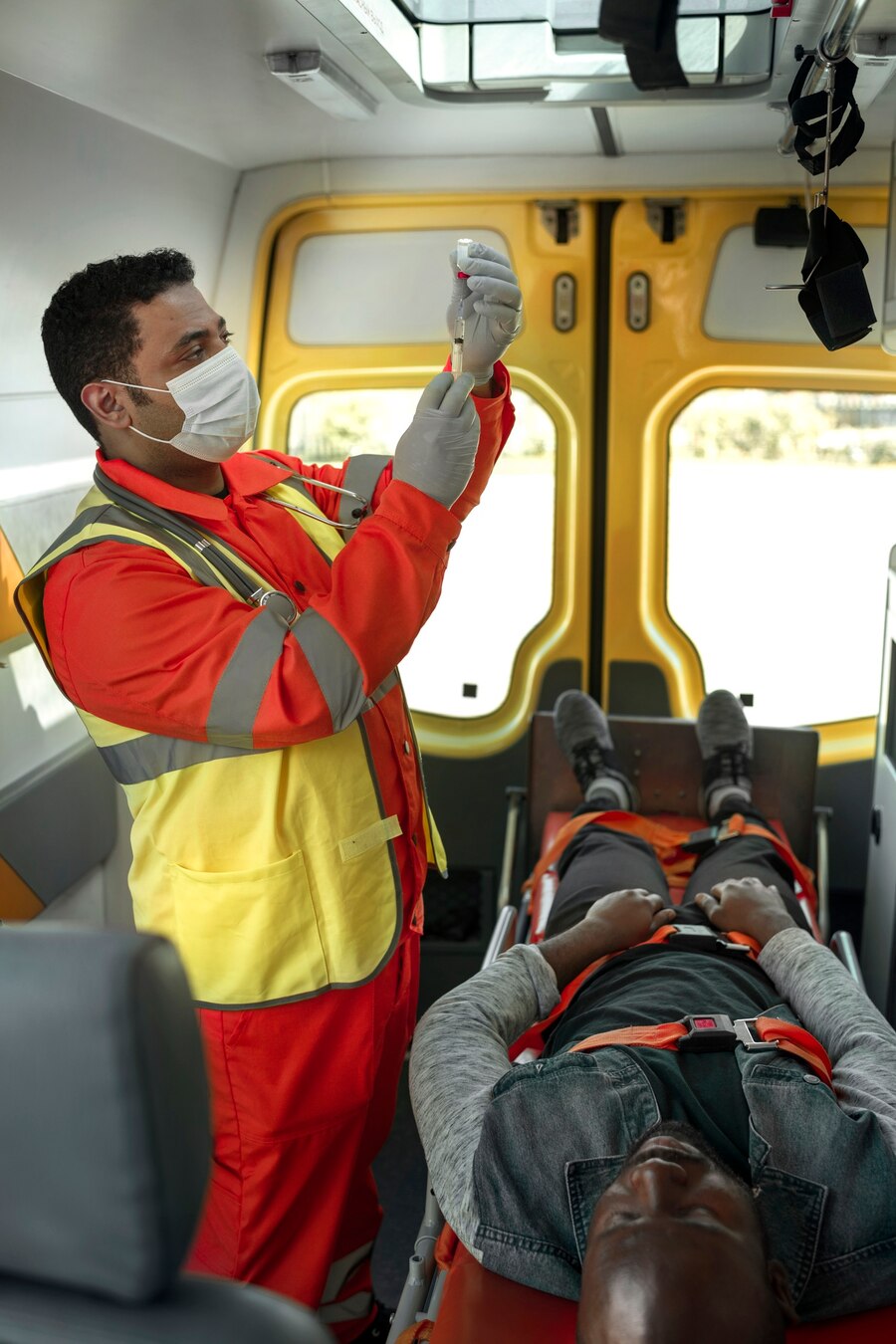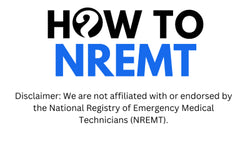In Idaho, where a quiet afternoon on the farm can turn into a high-stakes medical emergency or a backcountry hike can end in a sudden injury miles from the nearest hospital, Emergency Medical Responders (EMRs) are the thread between crisis and care. Whether you’re in Boise, Coeur d'Alene, or Twin Falls, EMTs in Idaho don’t just follow protocols; they adapt, improvise, and act fast in real-world conditions.
Becoming an EMT entails preparing for the kinds of calls that demand split-second judgment, calm under pressure, and technical skill when there’s no room for error. With new national testing changes and evolving state expectations, your path to certification needs structure, strategy, and the right tools.
This guide will walk you through everything you need to know to become an EMT in Idaho in 2025.
Step 01

Ensure Eligibility for Idaho EMT Certification
Before embarking on your EMT training journey, confirm that you meet Idaho's eligibility criteria:
- Age Requirement: Must be at least 18 years old.
- Education: Possess a high school diploma or GED.
- CPR Certification: Hold a valid CPR certification at the Healthcare Provider level.
- Background Check: Undergo and pass a fingerprint-based criminal background check through the Idaho Department of Health and Welfare.
- Legal Residency: Provide proof of lawful U.S. residency.
Meeting these prerequisites is the foundational step toward a rewarding EMT career in Idaho.
Step 02

Enroll in a State-Approved EMT Training Program
To become an EMT in Idaho, you must complete a state-approved EMT training program that meets national and local standards. These programs are designed not only to teach emergency protocols but to ensure you develop the confidence and competence needed to handle real-world medical scenarios under pressure.
A quality EMT course in Idaho will typically include three main components:
- Classroom Learning: You’ll explore topics like human anatomy, physiology, medical terminology, EMS operations, and common emergency care procedures. This foundation builds your medical decision-making skills and understanding of patient care.
- Hands-On Skills Labs: Under the guidance of certified instructors, you’ll gain hands-on practice in essential skills like airway management, bleeding control, CPR, patient lifting/moving, and trauma assessment.
- Clinical & Field Experience: Most programs include ride-alongs with local EMS services or shifts in emergency departments. These rotations are vital to applying your training in unpredictable, real-life situations.
Reputable training programs in Idaho include:
Before enrolling, review each program’s duration, location, schedule options, and graduation requirements. Some programs offer flexible evening or weekend classes, which can be helpful for those balancing work or family responsibilities. Choosing the right EMT course will set the tone for your success, both on the exam and in the field.
Step 03

Pass the NREMT Cognitive and Psychomotor Exams
After finishing your EMT course, your next step is to pass the National Registry of Emergency Medical Technicians (NREMT) cognitive exam. As of April 7, 2025, the structure of this exam has changed to better reflect real-world EMT responsibilities.
Updated BLS Domains (Effective April 7, 2025):
1. Scene Size-Up and Safety
- Assess scene hazards
- Ensure safety of responders, patients, and bystanders
- Determine the need for additional resources
2. Primary Assessment
- Evaluate airway, breathing, circulation
- Identify life-threatening conditions
- Determine the patient’s level of consciousness
3. Secondary Assessment
- Conduct full body or focused physical exams
- Gather patient history (SAMPLE/OPQRST)
- Identify underlying or developing conditions
4. Patient Treatment and Transport
- Administer oxygen, apply splints or bandages, manage bleeding
- Coordinate rapid or non-emergency transport
- Prepare for transfer to higher levels of care
5. Operations
- Communicate with dispatch and hospitals
- Complete EMS documentation
- Manage ambulance equipment, legal obligations, and radio traffic
6: Exam Format
- Computer-adaptive testing
- 70–120 questions
- 2-hour maximum
This is not just a knowledge check; it’s a strategic, scenario-based exam that evaluates how well you apply training in high-stakes situations.
Step 04

Apply for Idaho EMT Licensure
After successfully passing the NREMT exams, you can apply for EMT licensure in Idaho. The application process involves:
- Creating an Account: Register on the Idaho Gateway for EMS (IGEMS) License Management System.
- Submitting Documentation: Provide proof of NREMT certification, CPR credentials, background check results, and training completion.
- Application Review: The Idaho Department of Health and Welfare will assess your application and notify you of the outcome.
Maintaining open communication with the licensing board and promptly addressing any additional requirements will facilitate a smooth licensure process.
National vs. Idaho EMT Certification Requirements
Understanding the distinctions between national and state-specific requirements is essential for aspiring EMTs.
The table below provides a comparative overview:
| Requirement | National (NREMT) | Idaho State |
|---|---|---|
| Age Requirement | 18 years | 18 years |
| High School Diploma/GED | Yes | Yes |
| CPR Certification | Yes | Yes |
| Background Check | Varies by state | Yes |
| Completion of EMT Training | Yes | Yes |
| Cognitive Exam | Yes | Yes |
| Psychomotor Exam | Yes | Yes |
| State Application | N/A | Yes |
| Continuing Education | Yes | Yes |
Note: The psychomotor exam is no longer part of the National Registry (NREMT) certification process.
Stay informed about any changes in certification requirements by regularly consulting both the NREMT and Idaho's EMS authorities.

- Choosing a selection results in a full page refresh.

